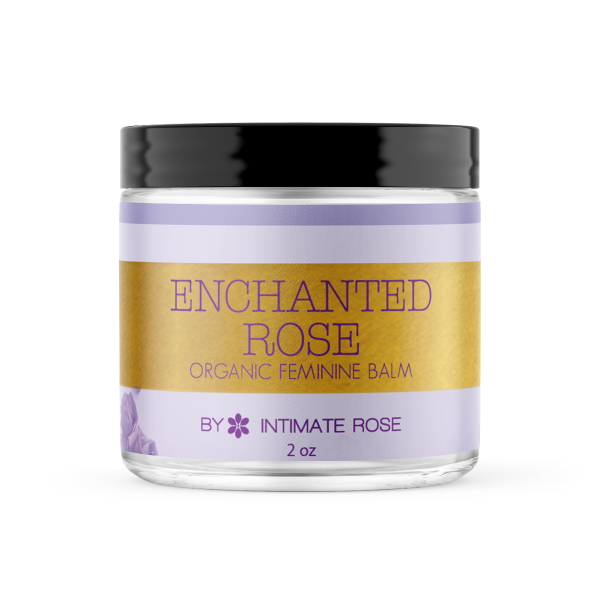Approximately 80% of women experience menstrual cramps during their reproductive years but is it normal to feel cramps during perimenopause and menopause?
This article outlines why cramping can occur during perimenopause and menopause and what you can do to relieve it.
What’s the Difference Between Perimenopause and Menopause?

Perimenopause, also known as the ‘menopausal transition’ is the time the female body takes to move from the reproductive stage of life into menopause. During this phase of life, menstruation becomes irregular as estrogen levels drop and the ovaries shut down. Perimenopause typically begins in the late 40s or early 50s and is known to last 4-8 years.
Menopause is reached when women have not menstruated for 12 consecutive months and can no longer get pregnant. Once women enter the phase of menopause, they are considered postmenopausal for the rest of their lives.
Although there are a plethora of symptoms women experience during menopause and perimenopause (which we cover later on), we'll be looking into menstrual camping during this stage.
What Is Menstrual Cramping?
Throughout the menstrual cycle in the reproductive years, estrogen and progesterone levels fluctuate synchronously to allow for ovulation, gestation, or menstruation. For instance, when gestation has not occurred after ovulation, estrogen levels drop in preparation for the uterus lining (endometrium) to be shed during menstruation.
A few days before a period estrogen levels drop, signaling cells within the uterine lining to break down and release chemicals known as prostaglandins. The release of these chemicals initiates a narrowing of the blood vessels which, in turn, causes the uterine muscles to contract and release the endometrium as menstrual bleeding.
Sometimes, these uterine muscle contractions are too strong and fully compress the blood vessels within the uterine lining instead of narrowing them. When this compression temporarily cuts off the oxygen supply to the uterine muscles, it causes the sensation of cramping. Once a period begins, estrogen levels rise, prostaglandin levels drop, and menstrual cramps subside.
What Happens When Perimenopause Starts?
When perimenopause begins in the late 40s or early 50s, estrogen production starts to decline and the balanced synchronization with progesterone is disrupted. Rather than rise and fall synchronously to keep ovulation and menstruation regular, estrogen and progesterone begin to fluctuate unpredictably for 4-8 years as estrogen production and ovulation gradually decrease.
Does Menstrual Cramping Still Occur in Perimenopause?
As perimenopause progresses, estrogen and progesterone levels continue to fluctuate unpredictably, causing ovulation and menstruation to become more irregular and perimenopause symptoms to set in.
Due to this unpredictable hormone fluctuation, estrogen levels surge randomly and signal the
haphazard release of prostaglandins. This irregular release of prostaglandins can cause cramping during perimenopause with or without the appearance of a period.
Can Cramping Get Worse in Perimenopause?
Some women who experience mild menstrual cramping during the reproductive years report more severe cramping during perimenopause, while for others it subsides. On the other hand, it is also possible for women who have never experienced menstrual cramping to feel it during perimenopause.
In addition to hormone fluctuations and the unpredictable release of prostaglandins, some women with underlying reproductive-related conditions can experience worse cramps and heavier bleeding during perimenopause. These conditions include endometriosis, ovarian cysts, uterine fibroids, and pelvic inflammatory disease.
If cramps during perimenopause largely affect your quality of life and do not respond to pain medication, schedule an appointment with your doctor to rule out anything more serious.
Does Cramping Still Happen After Menopause?
Once estrogen production stops, ovulation ceases, and menstruation has not occurred for 12 consecutive months, women have reached menopause. While abdominal cramping can still happen after menopause, and it can feel like a menstrual cramp, it is normally caused by something else.
Cramping after menopause usually signals an underlying infection or condition such as endometriosis, uterine fibroids, or gastrointestinal issues, but it can also be a sign of ovarian or uterine cancer.
The best way to determine the cause of cramping after menopause is to schedule a consultation with your healthcare provider. Some conditions can be treated with antibiotics, while others may require surgery, hormone treatment, vaginal dilator therapy, pelvic massage wands, or radiation treatment.
Infection
Estrogen helps keep the vaginal tissues and urethra healthy and flexible. However, when estrogen levels drop during perimenopause vaginal dryness and urethral irritation can create an environment for urinary tract infections to occur more frequently.
Antibiotics are usually required to treat UTIs. However, if you are prone to repeated UTIs during perimenopause or after menopause, taking a daily probiotic can help maintain a healthy vaginal environment to prevent infection.
Uterine Fibroids
Uterine fibroids are non-cancerous growths of tissue and muscle cells that form in or on the wall of the uterus. They are normally linked to high estrogen levels during the reproductive years and are considered rare in women who have reached menopause. But although rare, they can still occur.
Depending on the size of uterine fibroids, surgery may be required to relieve them. Pelvic health tools like pelvic massage wands and vaginal dilators are also helpful to ease cramping, pelvic pain, and the pain during sex that often occurs with fibroids. More on that below.
Endometriosis
Endometriosis is when tissue similar to the uterus lining (endometrium) grows outside the uterus, typically on pelvic organs like the fallopian tubes and ovaries. When this endometrial tissue swells and bleeds, it can cause cramping and pelvic pain.
It was previously believed that endometriosis only occurred during the reproductive years due to its reliance on estrogen. However, approximately 5% of postmenopausal women have been diagnosed with endometriosis.
Medical research has shown that endometriosis in postmenopausal women predominantly occurs in women who have taken hormone replacement therapy (HRT) to treat perimenopause symptoms. This is known to occur in women who have never had endometriosis before.
See below for effective treatments to ease the symptoms of endometriosis after menopause.
Gastrointestinal Issues
The gastrointestinal tract, also known as the GI tract, includes the mouth, throat, esophagus, stomach, small and large intestines, rectum, and anus. Any issues affecting any part of the GI tract can cause abdominal cramping. Furthermore, estrogen is known to influence how the GI tract functions, so when estrogen is at its lowest after menopause, some women can experience GI issues and associated abdominal cramps.
Research has shown that women with GI disorders, such as irritable bowel syndrome, ulcerative colitis, chronic constipation, and chronic diarrhea can experience more severe symptoms and cramping after menopause.
If you can relate, schedule an appointment with a gastroenterologist or nutritionist for guidance.
Ovarian and Uterine Cancers
After menopause, cramping in the abdomen could also be caused by ovarian or uterine cancer. Typically, other symptoms such as bloating, feeling full after very little food, urinating frequently, and heavy vaginal bleeding would also occur.
Should you notice any of the above symptoms in connection with cramping after menopause, see your doctor ASAP.
How to Treat Perimenopause Cramps
Whether you are experiencing cramps for the first time during perimenopause or menstrual cramping has worsened, the following treatments are recommended for relief.
Pain Medication
Over-the-counter anti-inflammatory medications like Ibuprofen (Advil) and naproxen (Aleve) are highly recommended for relieving perimenopausal cramping.
Birth Control Pills
Oral birth control pills, containing both estrogen and progestin are sometimes prescribed to regulate hormone fluctuations and ease cramps during this stage of life.
Exercise
Although you may not feel like it when perimenopause cramps hit, aerobic exercises like walking, hiking, jogging, swimming, and gym workouts can reduce pain and cramps by releasing endorphins and improving blood circulation.
Hormone Replacement Therapy (HRT)
HRT is a medication made from synthetic female hormones like estrogen, progestin, or both to treat symptoms of perimenopause. Normally containing bovine-derived gelatin and estrogen from horses, it can reduce cramping and other menopause symptoms for some women but can have adverse side effects for others. HRT is also believed to increase the risk of breast cancer.
Hormonal and Non Hormonal Menopause Relief

Phytoestrogens
Phytoestrogens, on the other hand, are derived from plants and are considered a natural alternative to HRT. Instead of replacing the dropping estrogen levels during perimenopause, phytoestrogens like Vitex Chasteberry Supplements can mimic the effects of estrogen and the body responds as if it’s present.
Inexpensive, effective, and natural, Vitex Chasteberry supplements can reduce cramping and other symptoms of perimenopause without any of the side effects of HRT. Given that some women develop endometriosis or breast cancer after menopause due to taking HRT, these natural supplements are often the most natural way of minimizing cramps during perimenopause.
Treating Menopause Cramps Caused by Endometriosis & Uterine Fibroids
Endometriosis and uterine fibroids often result in similar symptoms such as abdominal cramping, pelvic pain, and dyspareunia (painful sex). To treat these symptoms, scheduling an appointment with a pelvic physical therapist is highly recommended. In addition to learning about pelvic massage, diaphragmatic breathing, and relaxation techniques, they will also show you how to find relief at home.
Pelvic Massage Wands are designed to relax tight pelvic floor muscles, massage painful scar tissue, and relieve the chronic pelvic pain associated with endometriosis and uterine fibroids. Silicone Vaginal Dilators are designed to help alleviate discomfort during sex and regular practice will keep the vaginal walls healthy, flexible, and lubricated through the postmenopausal years.
Additional Symptoms of Perimenopause and Menopause
The symptoms of perimenopause and menopause are often similar although they can be mild for some and more intense for others. Most women notice that symptoms ease once irregular menstruation ceases and menopause begins. However, vaginal dryness, hot flashes, a lack of concentration, and headaches can linger into postmenopause for some.
The most common symptoms of perimenopause and menopause are listed below, but women rarely experience all symptoms:
- Mood swings and irritability
- Dry skin
- Breast pain or tenderness
- Irregular menstruation (only during perimenopause)
- Cramping
- Hot flashes (also known as vasomotor symptoms)
- Night sweats
- Interrupted sleep (insomnia)
- Vaginal dryness
- Low libido
- Pain during sex (dyspareunia) due to vaginal dryness
- Heart palpitations
- Headaches
- Muscle aches and joint pains
- Lack of concentration
- Weight gain
- A more frequent urge to pee
- Mild depression
- Hair loss or hair thinning
- Loss of bone density (due to low estrogen levels)

Get your personalized HRT plan!

Get your personalized HRT plan!
Conclusion
Sporadic abdominal cramping during perimenopause is normal and mainly due to dropping estrogen levels and unpredictable hormone fluctuations. However, if it is severe enough to disrupt your quality of life, consult your doctor to rule out any underlying conditions.
Abdominal cramping after menopause is not usual and is often caused by an infection, underlying reproductive-related conditions, or gastrointestinal issues. Should you experience cramping after menopause, pay a visit to your doctor.
References
Johns Hopkins Medicine – Perimenopause - https://www.hopkinsmedicine.org/health/conditions-and-diseases/perimenopause
Web MD – Menopause - https://www.webmd.com/menopause/menopause-basics
National Library of Medicine - The Normal Menstrual Cycle and the Control of Ovulation - https://www.ncbi.nlm.nih.gov/books/NBK279054/
Cleveland Clinic – Estrogen - https://my.clevelandclinic.org/health/body/22353-estrogen
National Library of Medicine - Preventing urinary tract infections after menopause without antibiotics - https://pubmed.ncbi.nlm.nih.gov/28364867/
Medical News Today - Fibroids after menopause: Should I worry? https://www.medicalnewstoday.com/articles/319576
National Library of Medicine - Endometriosis in Menopause—Renewed Attention on a Controversial Disease - https://www.ncbi.nlm.nih.gov/pmc/articles/PMC7151055/
Medical News Today – What are the Symptoms of Uterine Cancer After Menopause - https://www.medicalnewstoday.com/articles/symptoms-of-uterine-cancer-after-menopause

Get your personalized HRT plan!












